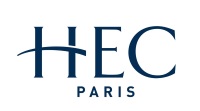No 1049: Fundamentals and Exchange Rate Forecastability with Machine Learning Methods
Tomasz Michalski () and Christophe Amat ()
Abstract: Simple exchange rate models based on economic fundamentals were shown to have a difficulty in beating the random walk when predicting the exchange rates out of sample in the modern floating era. Using methods from machine learning -- sequential adaptive ridge regression -- that prevent overfitting in-sample for better and more stable forecasting performance out-of-sample the authors show that fundamentals from the PPP, UIRP and monetary models consistently improve the accuracy of exchange rate forecasts for major currencies over the floating period era 1973-2013 and are able to beat the random walk prediction giving up to 5% improvements in terms of the RMSE at a 1 month forecast. "Classic'' fundamentals hence contain useful information about exchange rates even for short forecasting horizons -- and the Meese and Rogoff (1983) puzzle is overturned. Such conclusions cannot be obtained when rolling or recursive OLS regressions are used as is common in the literature.
Keywords: exchange rates; forecasting; machine learning; purchasing power parity; uncovered interest rate parity; monetary exchange rate models
57 pages, August 29, 2014
Full text files
papers.cfm?abstract_id=2448655
Questions (including download problems) about the papers in this series should be directed to Antoine Haldemann ()
Report other problems with accessing this service to Sune Karlsson ().
RePEc:ebg:heccah:1049This page generated on 2025-06-10 11:14:55.

